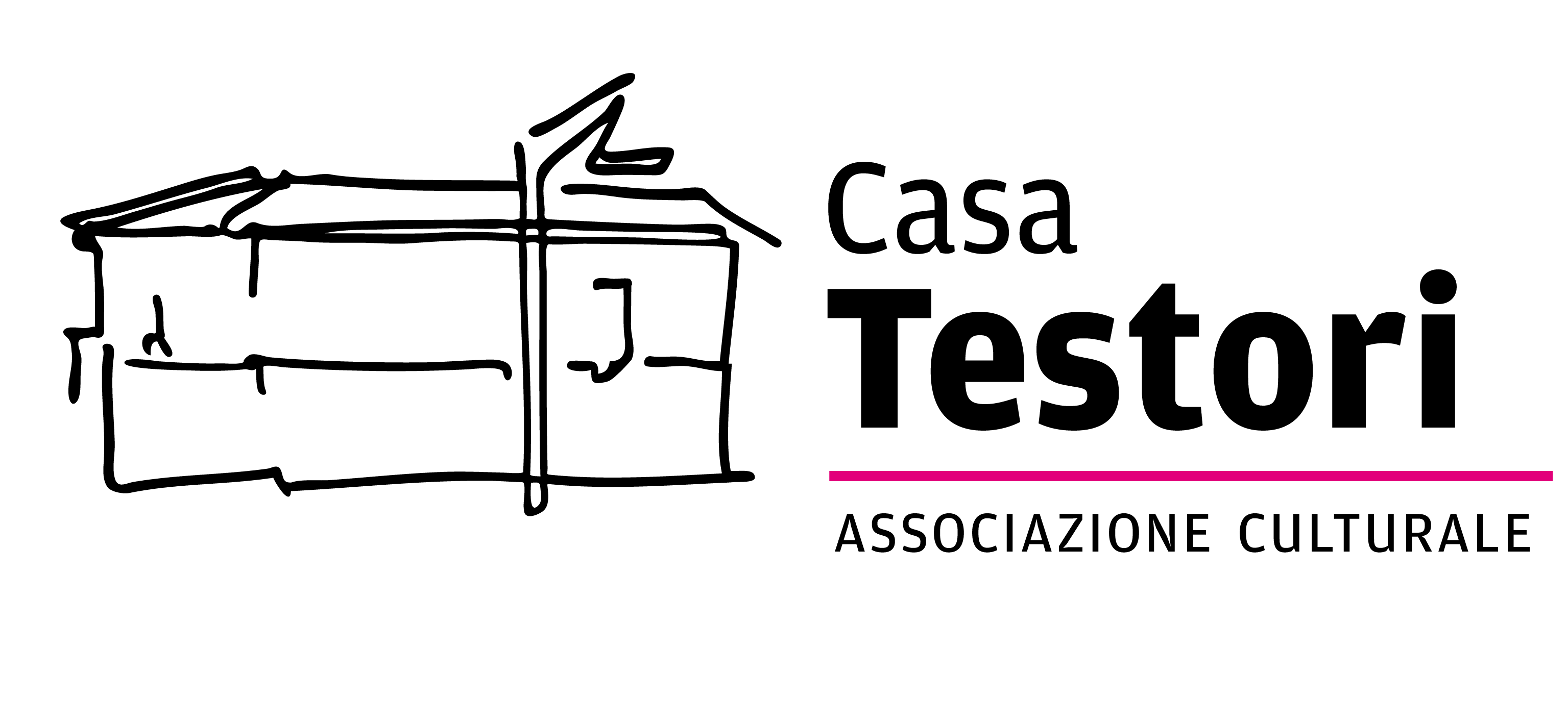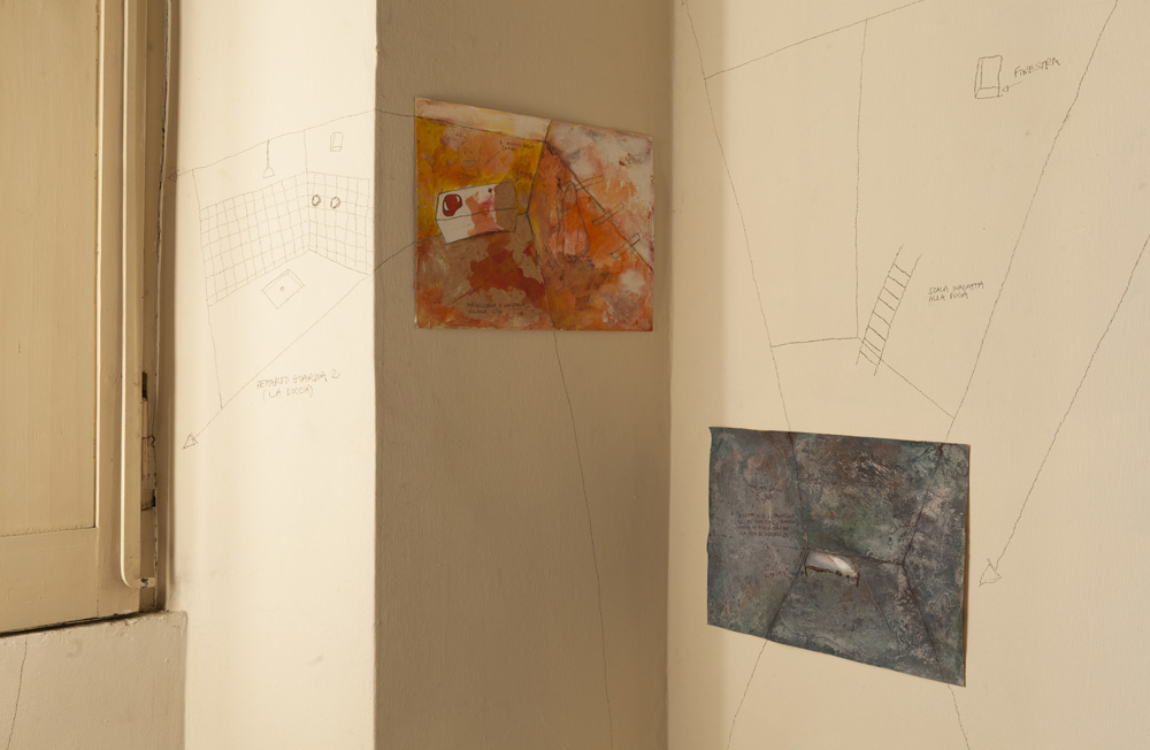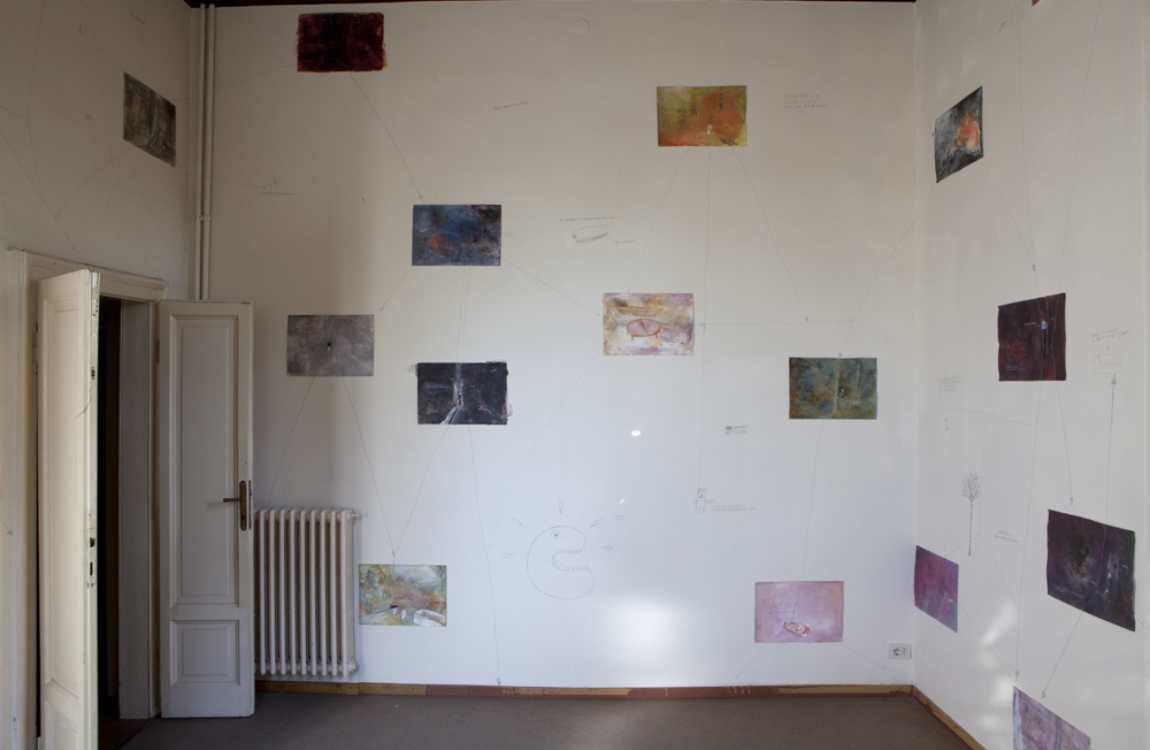Room 12
My room is a place of passage and an uncomfortable vantage point from which to observe me. Yet I am ready to wait every time I enter it, temporarily and not to be present. Waiting for new images to take shape. The effort is extreme and collected in itself. Forgetting to exist in absence. And then I go out, the picture remains, the figurative image of what I am when I remember everything. Life. My sincere and naked story at the same time appears.
Piero 1/2Botta
More spontaneously than by quotation, I believe that Piero 1/2Botta’s paintings seem to allusively rediscover the carnal intimacy that Philip Guston’s first manner and Willem de Kooning’s entire oeuvre expressed by breaking down and recomposing bodily and material masses. However, Piero 1/2Botta’s declared gestures and sensuality have pre – or extra – pictorial references, and obviously others than what the two masters of the New York School pursued half a century ago. They are autobiographical and bathe in the climate born, not only in Italy, with the painting of the Transavanguardia. But as would be those narrated by a Kafkaesque insect: contiguous, complicit, contaminated, by interstitialities that appear when the vision travels in a radial pattern through the density and meanders of flesh, whether attributable to the human body, to oneself, to others, or to animal presences. Despite an explicit empathy with colour and the interesting way of composing the coloured zoo-anthropomorphic masses by resorting to a repressed form of dripping that condenses and discounts at the same time this portraiture of anonymity, the young Piero 1/2Botta follows a very coherent path in the sense that his personal imprint is already a stylistic recurrence.Remo Guidieri
Piero 1/2Botta was born in Fermo in 1977. He lives and works in Milan.

















































































